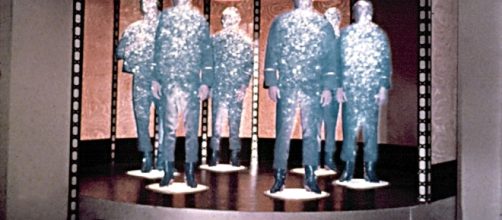It's a well known fact that many of today's inventions were first imagined by writers of science fiction scenarios. For example, the tablets, the mobile phones, and other gadgets that we use today have appeared thanks to science fiction movies. It took creative minds, such as Gene Roddenberry, who imagined "Star Trek" to imagine totally unusual gadgets at that time. "Star Trek" fans are also fascinated by teleportation. Could teleportation also become a reality in the future?
Interesting experiment
Some scientists want to show that teleportation is possible.
So, a group of researchers has projected a scheme which they intend to use to produce the so-called state of the "Schrödinger's cat," according to Daily Mail. Schrödinger's cat is an experiment imagined in 1935 by Erwin Schrödinger, an Austrian physicist. This experiment is often characterized as a paradox. It says that a micro-organism could be in two places at the same time. Schrödinger said he can prepare a cat to be both dead and alive at the same time.
They conceived a plan that hopes to achieve the first teleportation of the memory of a body, by using a technique called quantum superposition. The researchers suggest that the particles can exist simultaneously in two or more different phases or in two or more places at the same time, even before they can be noticed, writes the Daily Mail.
This experiment was thought of by Professor Tongcang Li from Purdue University, and Dr. Zhang-Qi from Tsinghua University in China. The two believe that by using superconducting circuits and electromechanical oscillators they can make possible the teleportation of micro-organisms. They also developed a scheme whereby they want to create the state of Schrödinger's cat.
Tongcang Li and Zhang-Qi want to find a method to translate into reality the concept of Schrödinger through a gradual freezing of bacteria.
Could teleportation be possible?
The two physicists say that, at this step of the experiment, teleportation can be achieved by using superconducting microwave circuits. More exactly, they want to use a hard magnetic field that will be able to change the internal state of a micro-organism, transferring it into another one. Since the states of the micro-organisms contain information, the scientists hope that they will be able to, essentially, beam the memory of the bacteria.

